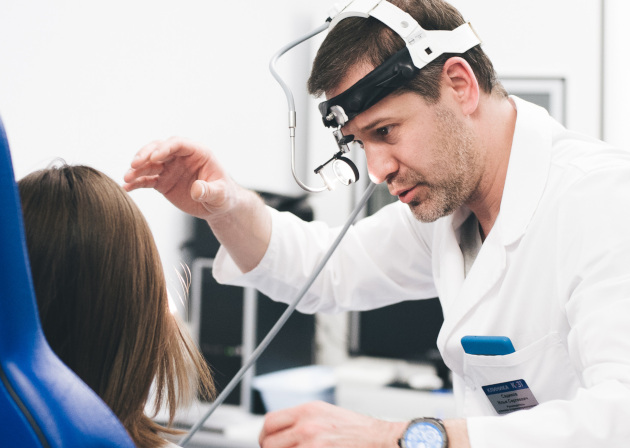Audiometry

specialists

equipment

treatment
Indications and contraindications for testing hearing acuity

It is important to undergo research for those who are faced with:
- Inflammatory diseases of the ear (otitis, labyrinthitis, mastoiditis)
- Neuroinfections, such as meningitis or encephalitis
- Head injuries
- Tumors of the brain or ear
- Inflammation of the auditory nerve
- Hearing loss of unknown origin
Infants are checked for congenital diseases of the hearing and nervous system. Additionally, if the patient has a history of ear disease and is considering cochlear implantation, audiometry can help select and fit a suitable hearing aid. After ear surgery, this test allows you to check whether your hearing has improved. People who work in noisy environments should undergo audiometry regularly, at least once a year.
The procedure is not recommended for people with mental disabilities and inappropriate behavior. Pure-tone and threshold audiometry are not performed on newborns or patients paralyzed after a stroke because they cannot follow doctor's orders. In these cases, computer audiometry is used.
General information about the procedure

How is an appointment with an otolaryngologist at K+31?
Our doctors

This award is given to clinics with the highest ratings according to user ratings, a large number of requests from this site, and in the absence of critical violations.

This award is given to clinics with the highest ratings according to user ratings. It means that the place is known, loved, and definitely worth visiting.

The ProDoctors portal collected 500 thousand reviews, compiled a rating of doctors based on them and awarded the best. We are proud that our doctors are among those awarded.
Make an appointment at a convenient time on the nearest date
Price
Answers to popular questions
Who does the hearing test?
What is the difference between an audiogram and audiometry?
What are the alternatives to audiometry?
An alternative to audiometry is impedance measurement. This is an automated method that helps evaluate the condition of the middle ear, including the eardrum and auditory tube. The procedure involves inserting a probe into the ear, which creates pressure and produces sounds. A special microphone analyzes the response of the eardrum to these influences.
Nuance! Impedance testing does not assess sensorineural hearing impairment or the condition of the inner ear.
This method is good for detailing the condition of the outer and middle ear, especially if questions arise after audiometry or a more accurate diagnosis is required.



































Types of audiometry
There are several types of audiometry:
Each of these methods has its own characteristics and is selected depending on the patient’s age, his condition and the tasks facing the doctor.